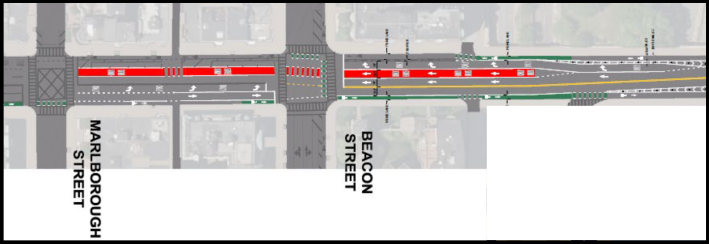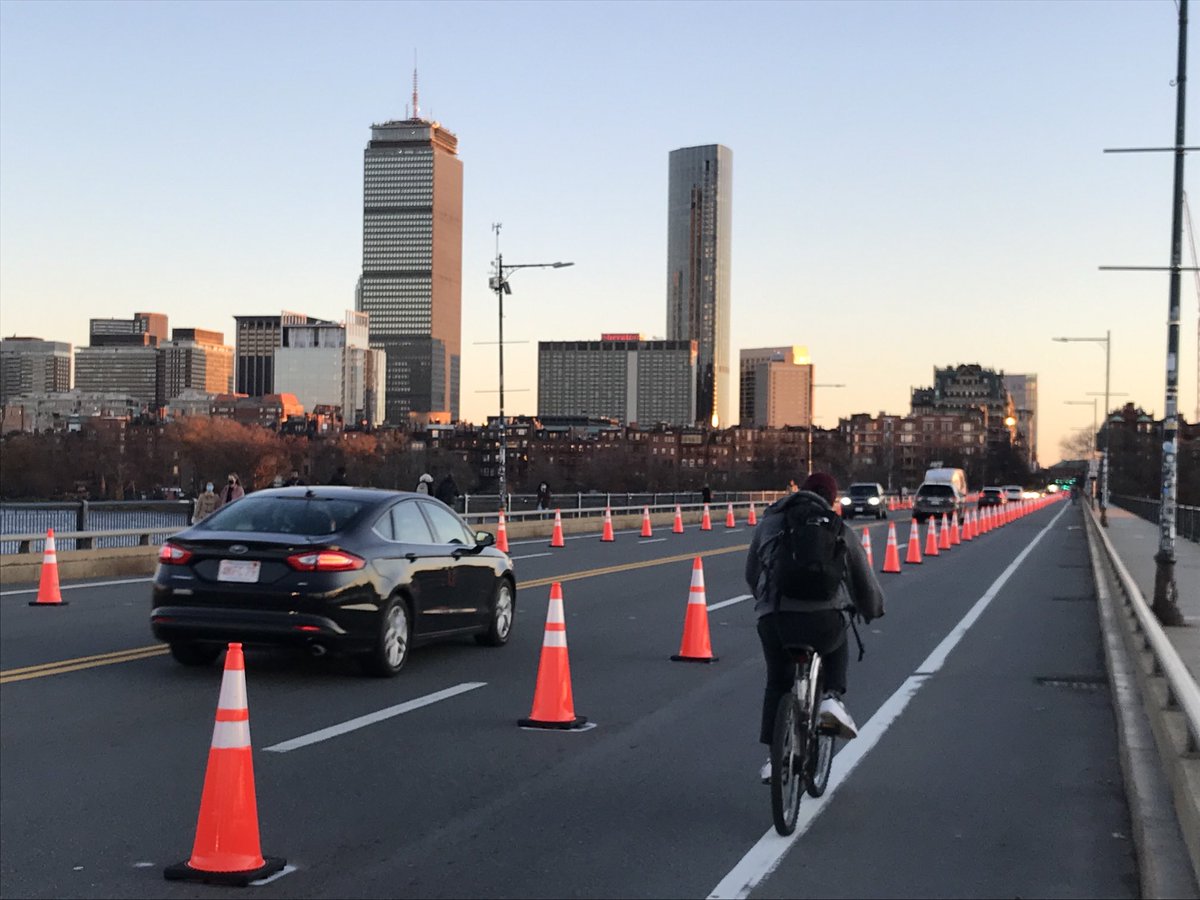MassDOT has deemed a pilot road configuration that reduced the number of car lanes and widened bike lanes on the Massachusetts Avenue bridge a success, and is making plans to make the new roadway layout permanent by painting new lanes, adjusting traffic signals, and installing flexible-post bollards in the next few weeks.
The changes will also free up space for new dedicated bus lanes on Massachusetts Avenue on either end of the bridge in Cambridge and Boston.
"We've had a pilot in place long-term since last year for bike lanes on the Mass. Ave. Bridge (also known as the Harvard Bridge). We are making these permanent," MassDOT Highway Administrator Jonathan Gulliver announced at last Wednesday's MassDOT board meeting.
"This has been an extremely effective pilot," continued Gulliver. "We had a lot of use out of the bike lanes throughout the entire period without any major impacts to traffic at all. This is a bridge that, like a lot of our other roadways, has changed its character over the years and we are now going to be reducing the number of lanes down to one lane in each direction to really make sure that things work well."
Sketches from Gulliver's presentation illustrated how the project will also make room for new dedicated bus lanes on each end of the bridge:


Gulliver said that the final implementation will "include both pavement markings and flexposts (for the bike lanes), new signal heads for transit priority, and traffic signal phasing on both sides of the river."
A slide in Gulliver's presentation suggested that implementation of the changes could begin in November.






